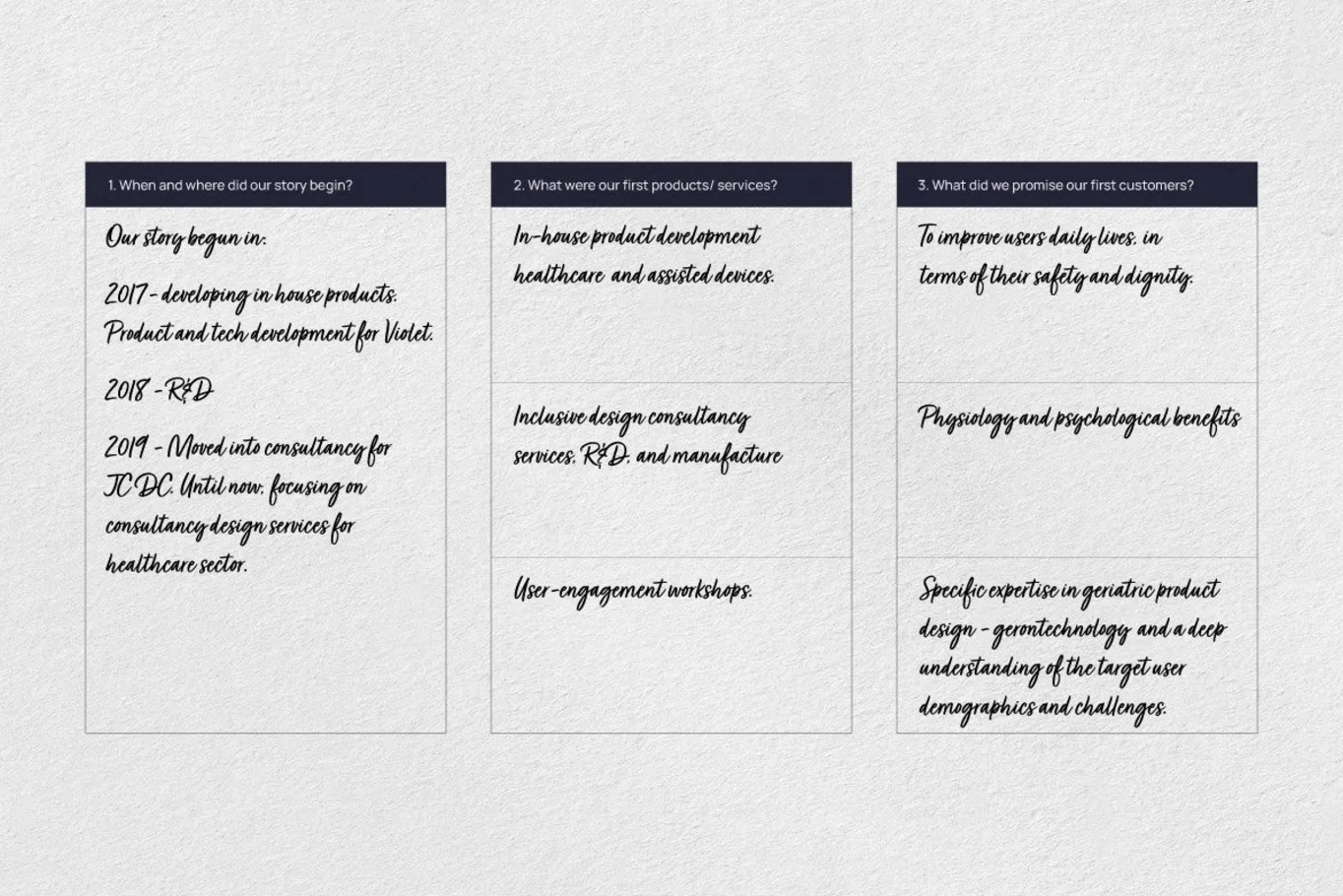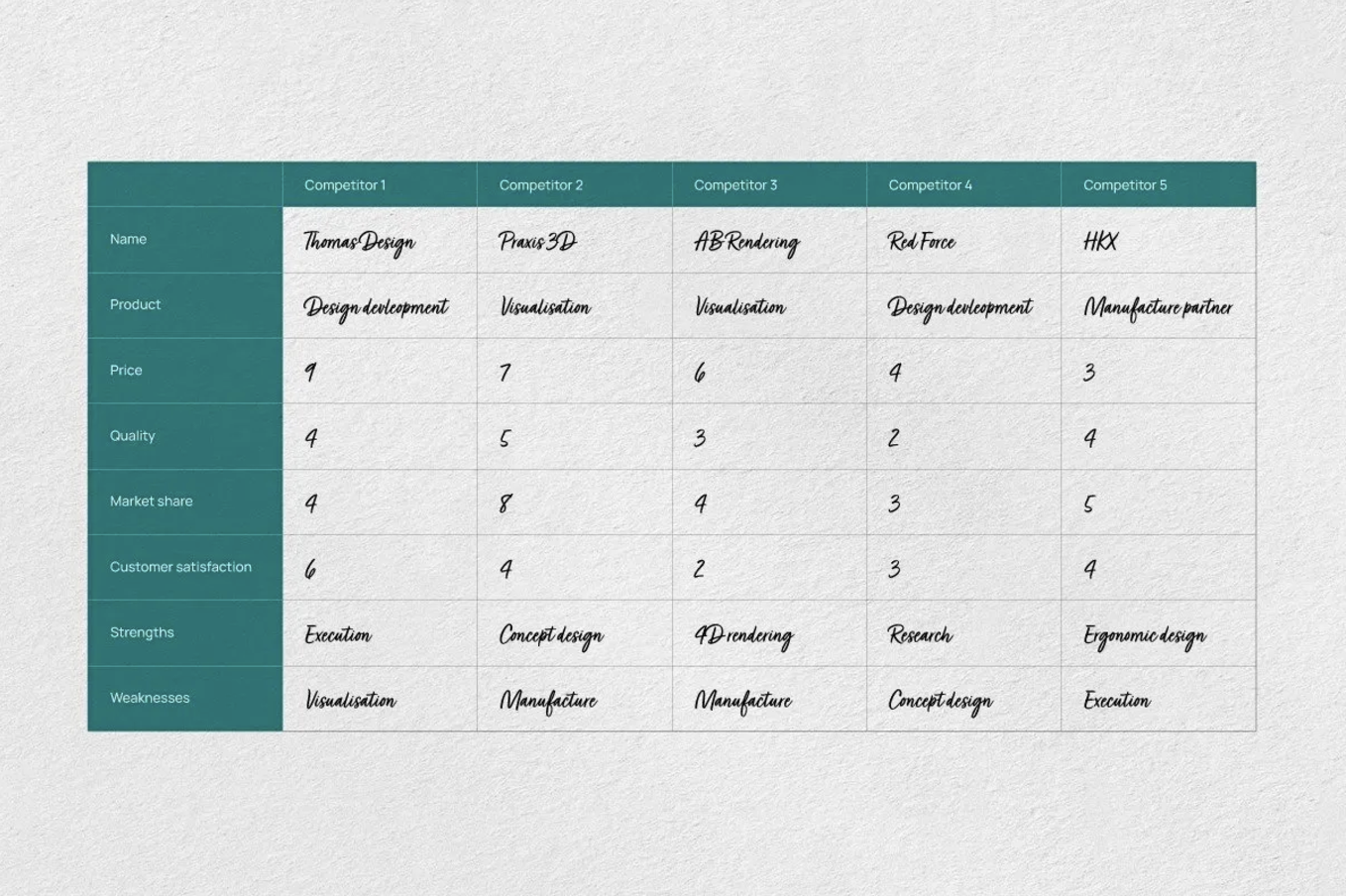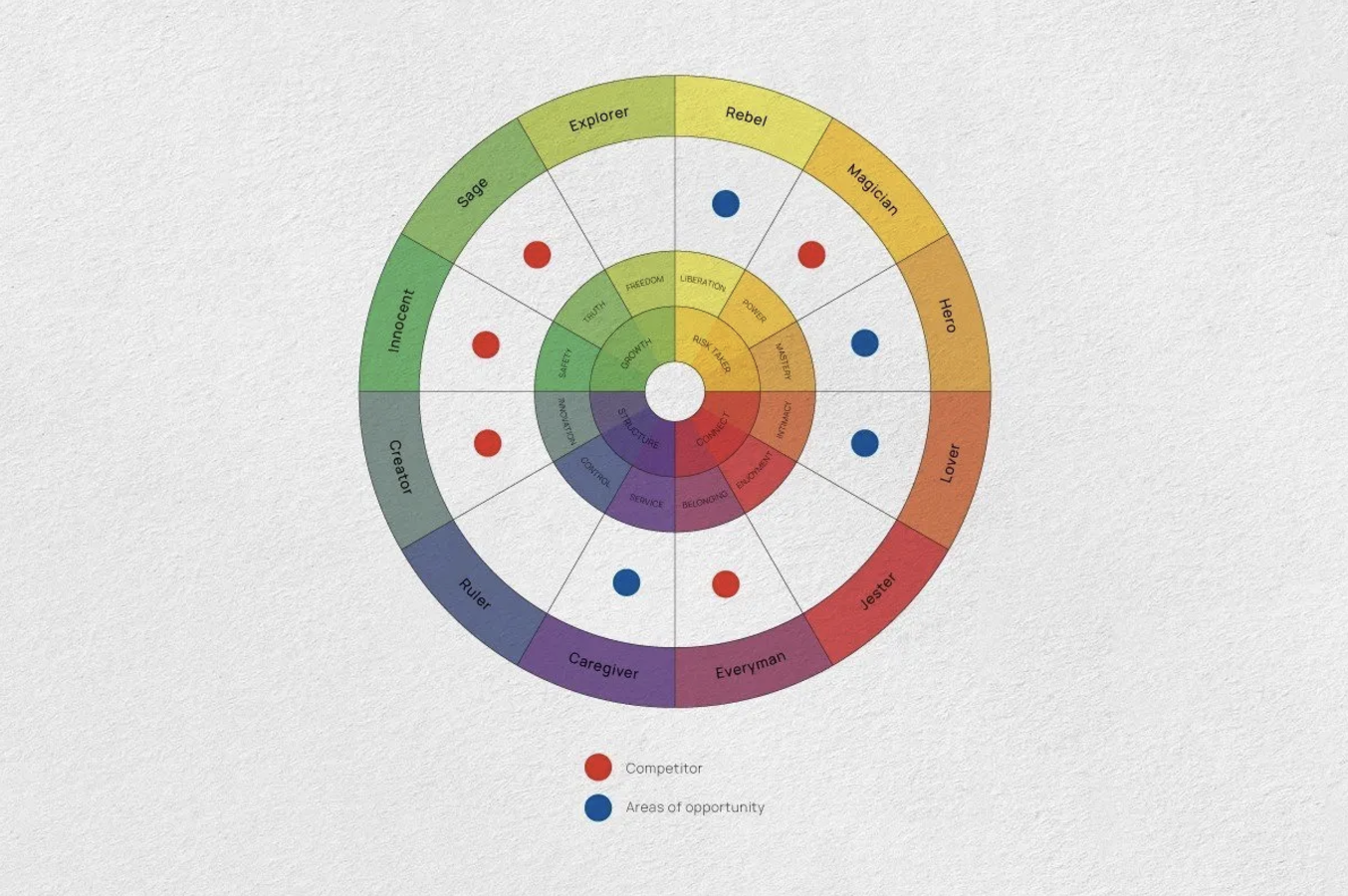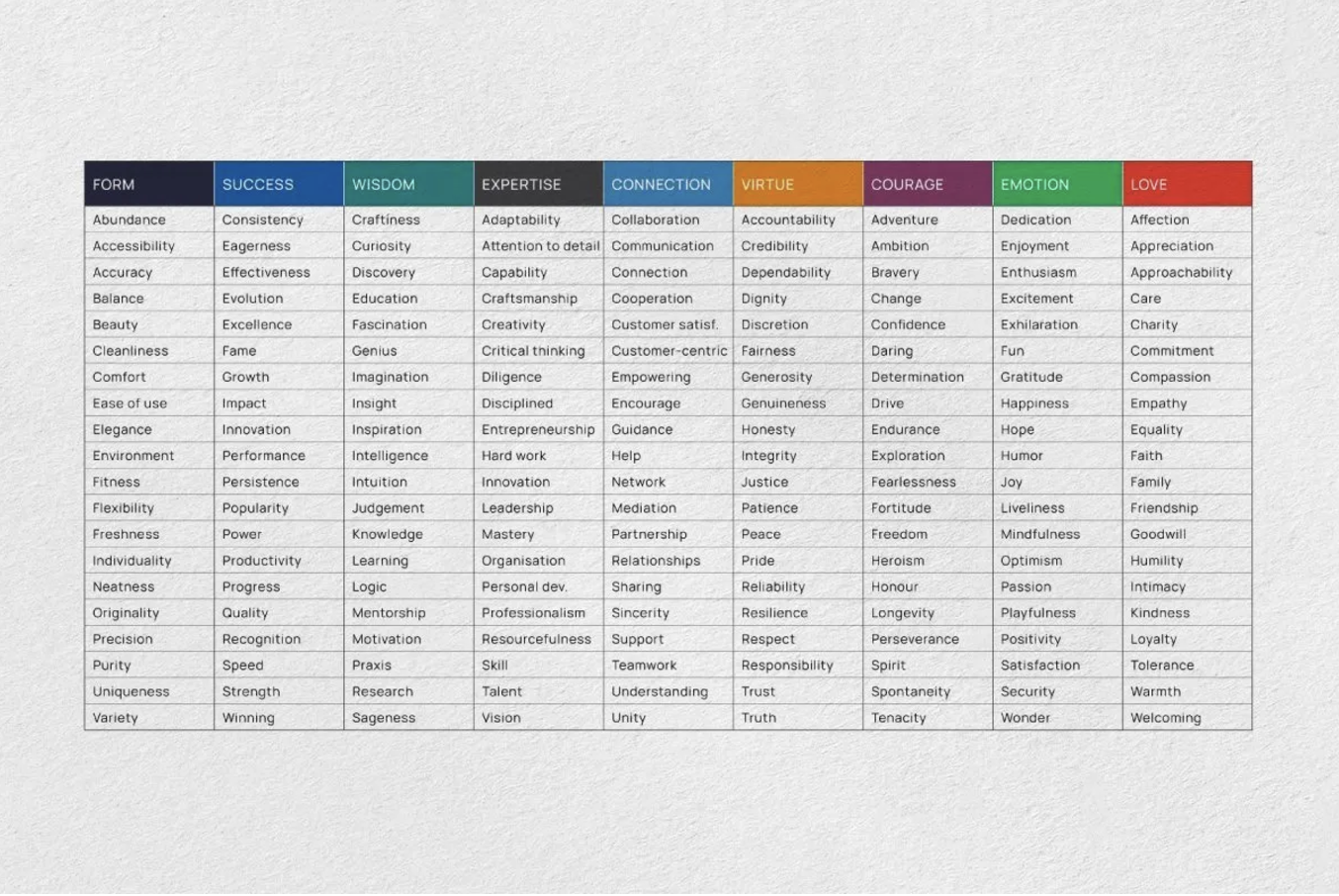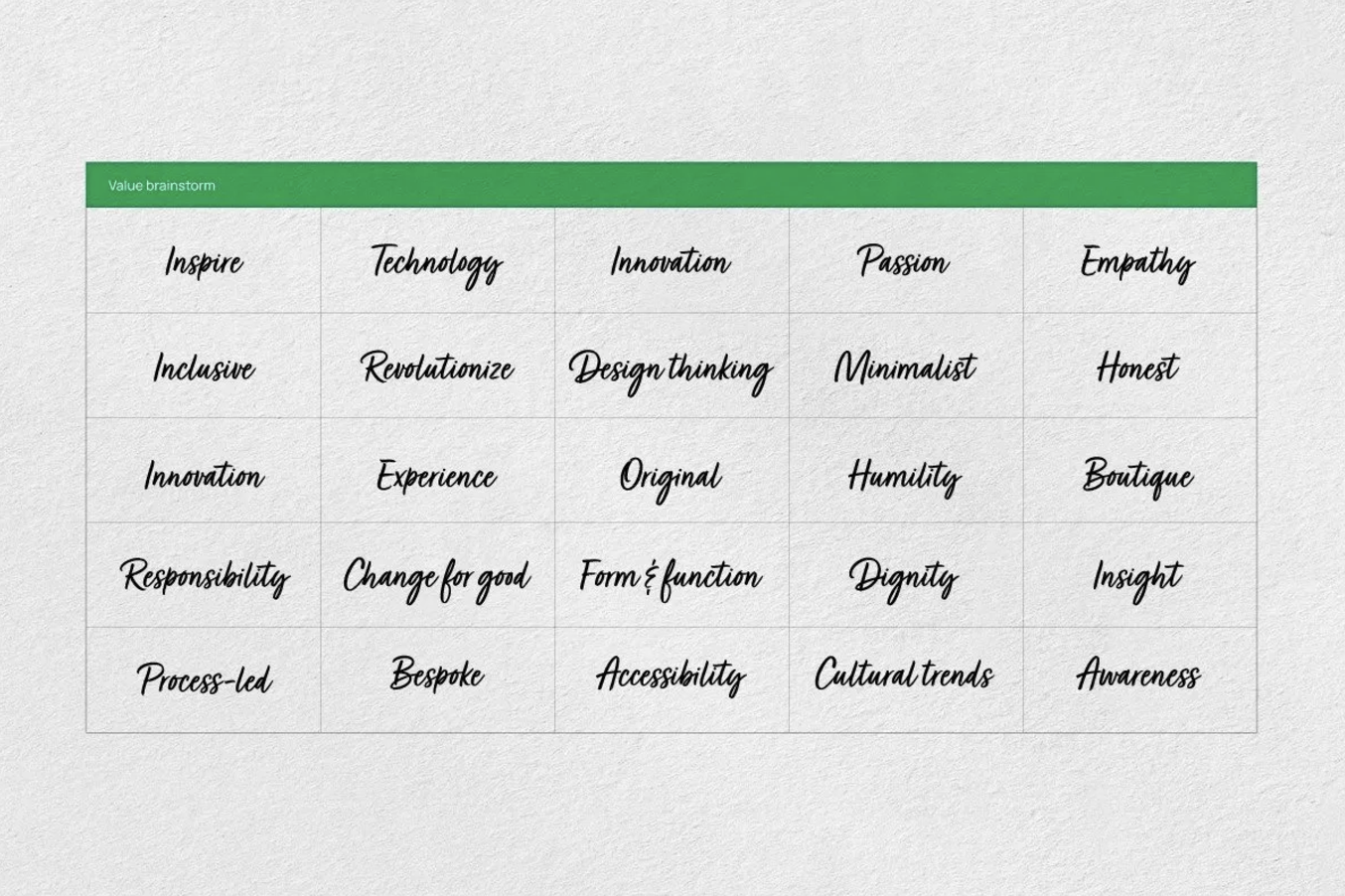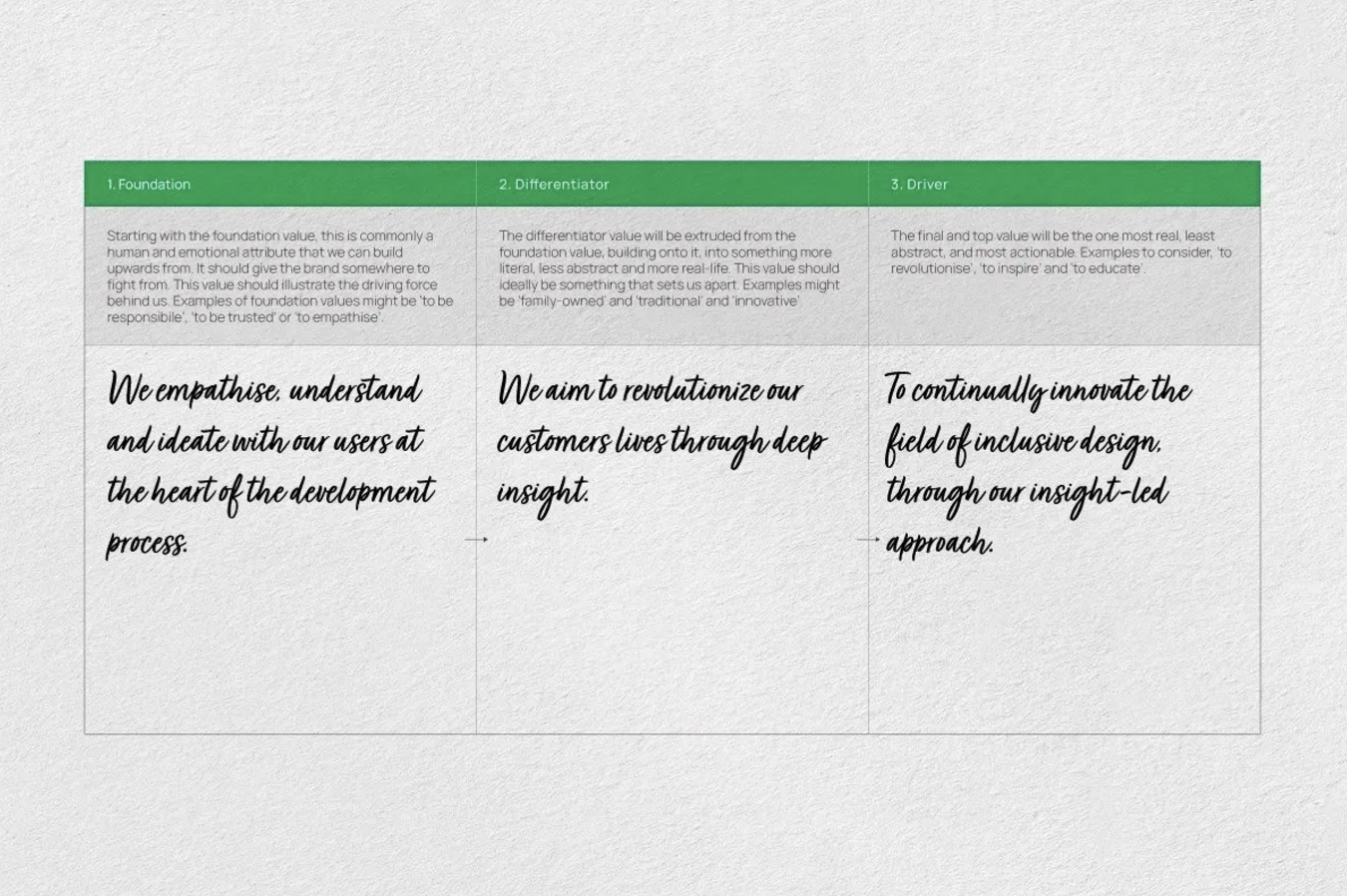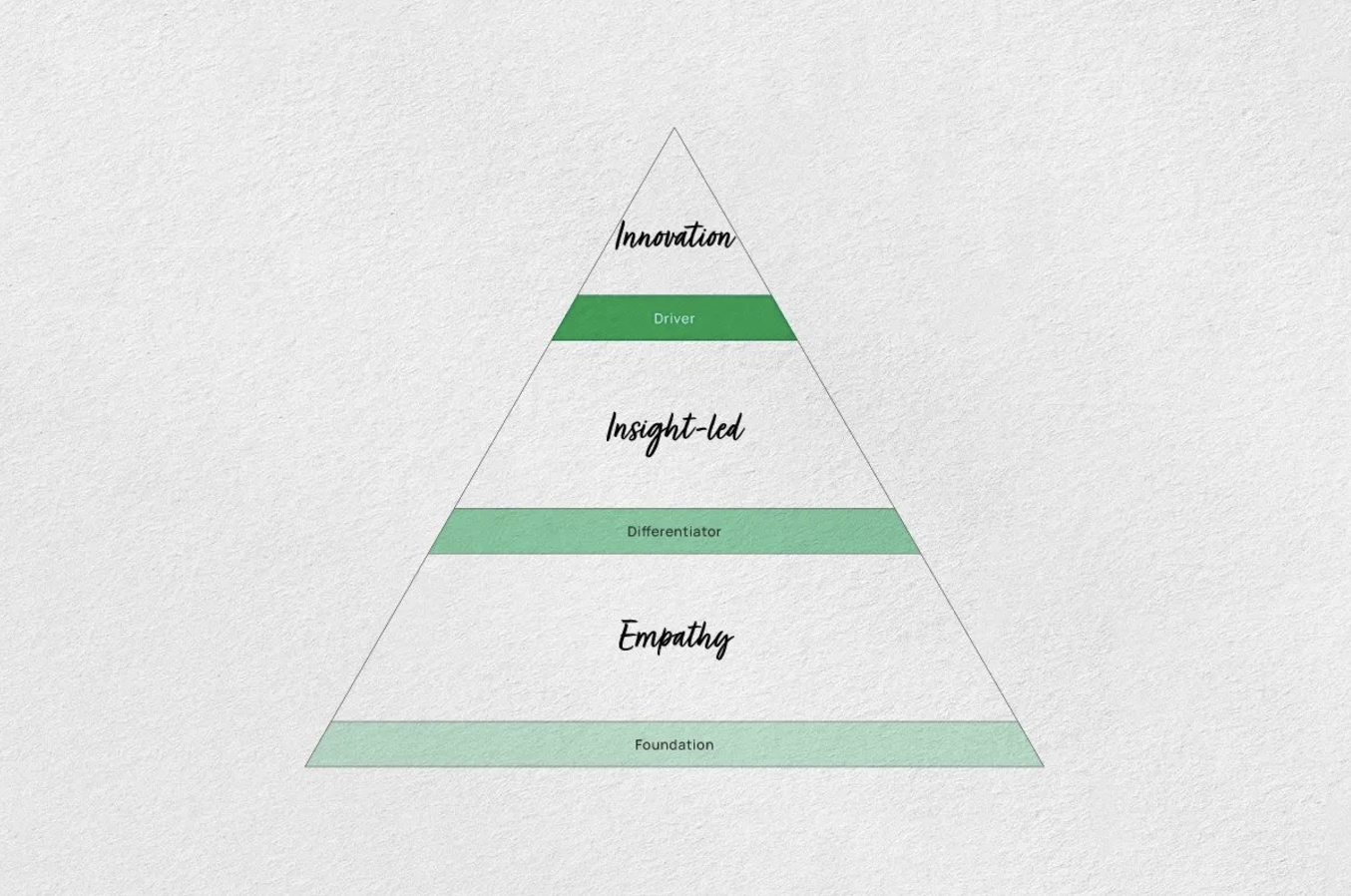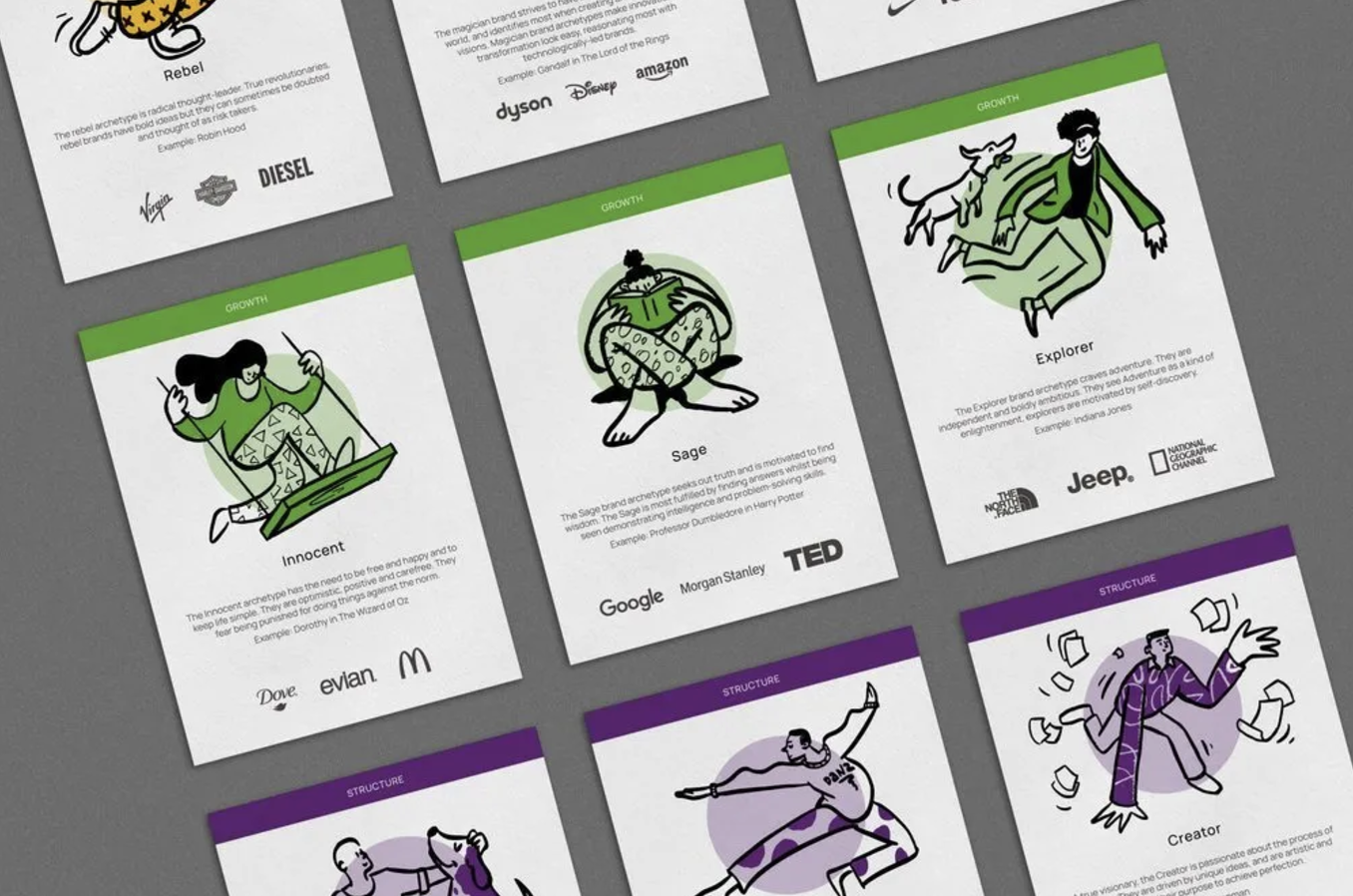How to Create a Brand Strategy
Our ‘Two-Day Brand Strategy’ framework with free downloadable tools.
By Adam Charlton · Last updated 23/12/2024
Posted in Resources, Branding 101
Creating a brand starts with building your brand strategy. The brand strategy document forms the brand identity design brief.
For a visual identity to remain relevant and compelling for the business, the branding process must begin with brand strategy. Branding is more than logo design. Branding considers the existing business, the story of its founding and evolution, its present, and your future goals and road map. Branding is contextual and unique to the organisation. A brand is used to differentiate products or services against other similar offers in the market. A brand is used to capture the brand equity built over time. To do this, a brand must be consistent; to be consistent, it must remain relevant over time.
The depth, breadth and focus of brand strategy is unique to the project. Whether we’re rebranding and existing organisation or creating a brand from the ground up, we always recommend first formulating your robust brand strategy.
Discovery
To begin the branding process, we first need to know everything we can about the business. We want to know the history of the organisation, what has bought them here, and in the case of rebranding, why do they need to rebrand? When and where did the idea for the business first begin? What were the first products that went on the shelves? Why should customers come to you and not your competitors?
To kick off the project, we run through our Brand Strategy Questionnaire. We use these 21 questions to initiate a dialogue and kick off an open, transparent and honest dialogue that will last the length of the project.
Prior to the initial call, we ask the client to collect together a ‘project team’ who will be responsible for decision-making throughout the project timeline. We recommend a small team of up to 5 of various levels within the company but we leave it to our client’s discretion of who to include. We use these questions as an outline for the discovery session.
Background
1. When and where did your organisation’s story begin?
2. What were your first products/ services?
3. What did you promise your first customers?
4. What are the current pain points of your organisation’s brand?
Customers & Competition
5. What are the physical products/ services that your organisation provides?
6. What are the main problems that these products/ services solve?
7. How would you describe your ideal customer?
8. Name three ways your organisation is different to its customers.
Vision
9. What were three key past milestones that made your organisation what it is today?
10. Name three things that customers currently know your organisation for.
11. Name three things you want your organisation to be known for in the future.
12. What are the three goals you want for your organisation for the next 5, 10 and 20 years?
Values
13. Can you name a few of your organisation’s core values?
14. If you had to choose just one core value, what would it be?
15. Why is this value so important to your organisation?
16. How would you describe your organisation’s brand?
Personality
17. Mark where your organisation sits on the personality sliders:
18. How would you describe your organisation’s personality?
Mission
19. How is your organisation unique?
20. If not for profit, why should your organisation exist?
21. How would you define success for your organisation’s rebrand?
This initial project call is a great introduction for the project teams and a necessary initial insight into the current state of the company. From this initial questionnaire, we start to build up a picture of the company. The answers will be short, initial gut reactions, which is a perfect foundation to start the brand strategy phase.
Brand Strategy
Now that you’ve acquainted yourself with your business well, we’re ready to move onto the most important part of developing your brand.
The questionnaire becomes the bedrock of the initial brand strategy workshop where we introduce the brand strategy deck we will be using during the phase and where will integrate and question the answers to the above.
The brand strategy phase is usually split over two, 1–2 hour workshops depending on which brand strategy deck we’re using. The first session we run through the strategy template, interrogating answers to the discovery questionnaire and filling out the brand strategy framework alongside our client. After the first session, we will review the draft template, iterating, making tighter and forming any recommendations. In the second brand strategy session, we will review our recommendations and options for the mission statement.
The first call through our brand strategy framework, interrogating our client’s answers to get deeper and better answers.
1. Brand Audit — Past, present, and future
2. DNA — Understanding the company behind the brand
3. Positioning — Leveraging difference
4. Vision — Looking back to look forward
5. Values — Defining the core values
6. Personality — Communicating character
7. Mission — Moving forward with a clear purpose
8. Brand Identity — Visual Metaphors
1. Brand Audit
“Quality and consistency create identity.”
— Jony Ive
The brand audit is where we can start to identify areas of problems, weaknesses and potential for improvement. Using our Brand Building Toolkit, we start the audit by filling out responses to the first three questions from the discovery questionnaire.
— Brand Audit Table from our Brand Building Toolkit
Continuing through, we create a current brand moodboard by pasting in a diverse range of important brand touchpoints. If the brand has no existing logo or wordmarks to use, then we will focus more on the products/ stores/ visuals of anywhere customers come into contact with brand touchpoints.
We will fill this first phase out after we receive the brand questionnaire answers and before we sit down with our clients for the brand strategy workshop. We find it helpful to have moodboards of the existing brand to help tease out any functional problems of the existing brand or subjective opinions.
2. DNA
“People don’t buy what you do, they buy why you do it.”
— Simon Sinek
— Service Map from our Brand Building Toolkit
Using a service map tool, the company services are broken down into broad overarching ‘Level 1’ categories, and then sub-divided into ‘Level 2’ categories which can be category of individual lines of services or products.
The Service Map is a great way to present the information in a non-biased, factual way. It is best to avoid precise percentage representations and focus rather to make sure all segments of business offer are clearly annotated to get a broad enough view of the business.
We then build on the service categoization by asking our clients “What three problems do we solve for our customers?” This is another great way to focus down to the truth, to start broad and then become more and more critical.
— Brand DNA from our Brand Building Toolkit
3. Positioning
“Positioning is not what you do to a product, it is what you do to the mind of the prospect.”
— Al Ries
— Positioning Matrix Diagrams from our Brand Building Toolkit
Using a matrix diagram, together with our client we first map out their competition to see where there are opportunities for product/ service differentiation. We keep things simple. Red represents our competitors, and green represents our clients.
To get a broad understanding of the marketplace, first, we map out Price against Quality. Which might give us early clues about areas of differentiation. We can then map out other comparison diagrams such as Market Share against Customer Satisfaction.
The second chart is made contextual to our client, and we can use a variety of comparisons to reveal some areas where we can differentiate our client’s company.
Comparing products or services — This could include features, price, and customer satisfaction.
Comparing operational efficiency — This could include metrics such as inventory turnover, cycle time, and defect rate.
Comparing cultural values — This could include things like employee engagement, innovation, and customer focus.
— Positioning Table from our Brand Building Toolkit
To complete the positioning phase we introduce the Brand Archetype Wheel. We first plot out our client’s competitors and then review areas of opportunity to differentiate. We have to be careful to steer clear of the personalities that do not resonate contextually with our brand. Brand Archetypes are one of the core tools of brand strategy and there is a great deal of depth you can explore.
— Brand Archetype Wheel from our Brand Building Toolkit
4. Vision
“A brand is a story told consistently through time.”
— Michael Beirut
— Vision table from our Brand Building Toolkit
We then use a vision road map to simplify our client’s path forward. For small and medium-size companies this workshop might be one of the first times the client has sat and really thought about the goals and objectives for their company. Don’t be afraid to sit with a little silence, and let the client speak, come to their own conclusions, that you can then question a little further to get even deeper.
We first ask our client to talk about the past, key moments that made the business what it is today. We might ask them to talk about their key achievements and milestones, or times of trouble they’ve overcome.
We then look forward to the distant future. We ask about their blue-sky 50+ year vision for their company. We ask our clients to define their goals.
We can then come back to the present, and ask our client to talk about what’s happening right now, or in the very close future.
— Future plans from our Brand Building Toolkit
Finally, we focus the dialogue around the core steps they will need to make in order to reach their future goals. Again, we’re not afraid to sit in silence, keep the questions a little open and broad. Once we have something down on paper we can then review, question and iterate.
5. Values
“If people believe they share values with a company, they will stay loyal to the brand.”
— Howard Shultz
— Core value wheel from our Brand Building Toolkit
— Core value finder from our Brand Building Toolkit
Using our Core Value Wheel, with our client we start to explore what are their brand values. In the first part of the exercise, we are trying to brainstorm as many possible values that feel natural and authentic to our clients business.
— Core value brainstorm from our Brand Building Toolkit
First, we guide our client to discuss openly and reach a list of 20–25 brand values.
— Core value map from our Brand Building Toolkit
This brainstorm is then questioned and critiqued down to just 6 values — three core values, and three overlapping values. These overlapping values are an important part of the process, and act as devices to link the core values to each other.
— Core value journey from our Brand Building Toolkit
With our client, we question whether these core values feel real and authentic, and together can successfully summarise the brand. We use the Value Journey to explain how the core values relate to each other.
— Core value pyramid from our Brand Building Toolkit
Finally, to record our client’s core values we place them into the Value Pyramid. Learn more in our Deep Dive post about uncovering your core values.
6. Personality
“Brands, like people, have personalities, and they can make or break them.”
— David Ogilvy
In this phase, we love using some of the tools included in our Brand Building Toolkit. With our client, our brand archetype cards are a great way to discuss our client’s brand personality and also their competitors. All of our tools are designed to help the project teams reach critical choices, which is a fundamental part of creating a strong, concise brand strategy.
— Brand personality sliders from our Brand Building Toolkit
We begin the personality phase by using a tool everyone understands, personality sliders! This tool is a great way to align our client’s thoughts. For each slider we use two marks.
The first, lighter colour indicates where the client’s company currently sits, and the second, darker mark indicates where the client wishes they would be.
— Brand archetype wheel from our Brand Building Toolkit
— Brand archetype cards from our Brand Building Toolkit
We come back to our Brand Archetype Wheel and decide our chosen brand archetype with the help of our brand archetype cards. Learn more in our Deep Dive post about finding your brand archetype.
— Brand personality from our Brand Building Toolkit
We then note down the unified, chosen brand archetype, and the reasons behind the choice.
7. Mission
“We wont be distracted by comparison if we are captivated by purpose.”
— Bob Goff
— Brand mission from our Brand Building Toolkit
Through the brand mission phase, we distil the core values, personality, vision, and positioning into our client’s mission statement. We reach final conclusions on the ‘what’, ‘how’ and ‘why’.
— Brand mission from our Brand Building Toolkit
A great mission statement is a critical statement that defines the purpose of our client’s organisation. It should directly answer the question, “If not for profit, why should our organisation exist?” The mission statement should be clear, concise, and memorable, and it should be something that everyone in the organisation can resonate with. Learn more in our Deep Dive post about how to write your mission statement.
8. Brand Identity
“Without a brand, a logo is meaningless.”
— Seth Godin
In the final phase of the brand strategy, we will prepare visual reference moodboards and share them with our client. This is a powerful way to aligning our creative team and client together before we start ideating branding concepts. We do this within the brand strategy template, which usually forms a couple of pages.
Visual reference — These are visual metaphors for the brand, abstract visuals of the core values and personality. For example, visuals for ‘freedom’ could be inspired by nature, and references for human values of ‘fairness’ could form a diversity of culture. This is a highly subjective phase where us creatives can start imparting our visual response to the brand strategy.
Graphic language — This is a more literal, stylistic and graphic moldboard, which often includes references across logos, packaging, signage and other brand touchpoints.
These moodboards are also a fantastic way to get our clients excited about the next phase, Visual Identity Design.
About the author —
Adam is the co-founder of Attend The Way, a Brighton-based branding agency. Adam helps build brands for companies at every growth stage, from startups to industry leaders. Adam has consulted and built brands for some of the world’s most recognised companies.


